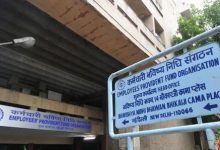It appears now that Modi was not entirely convinced if he had taken the right decision: Choose Rashtraneeti over Rajneeti. For, on almost all of his interactions with the Indian Diaspora, in locations across the globe, from New York to Dubai, he never failed to bring up “the sorry state of the country” on a range of issues. In fact, Modi has been trashed on a number of occasions for “trashing India’s image” on foreign shores. A political analysis, for Different Truths.
‘This or that’ has been Prime Minister Narendra Modi’s lot ever since he took charge of India in mid-2014. All of us face ‘this or that’ situations in life, there’s a Hamlet in all of us. But prime ministers should not allow the Hamlet in them to take charge.
Modi says he started his tenure with a cover-up! He gave cover to UPA-II. Of all the gall. According to the Prime Minister, when he took charge, “The state of the economy was much worse than expected. Things were terrible. Even the budget figures were suspicious.”
The BJP’s election promise was to highlight the “dismal management of the Indian economy”. Especially, “under an ‘economist’ prime minister and a ‘know-it-all’ finance minister.”
Modi says that “what we saw (of the Indian economy) when we formed the government left us shocked!” His newly formed government had all the trash to thrash the previous UPA-II government. But, posed with the question, what to do, with the trash, ‘this or that’, he chose not to trash the ‘economist’ and the ‘know it all.’
He chose to be “guided by Rashtraneeti (India First)” rather than be “driven by Rajneeti (political considerations)”. In other words, the government of Narendra Modi covered up for UPA-2, started his tenure with a lie, even if the lie was never uttered.
Modi opted not to highlight the “suspicious bits” despite his promise to the electorate.
Now, four years later, with another general elections round the corner, Modi reveals the Hamletian question he was faced with: “As you would remember, I had clearly said during the campaign ‘Saugandha Mujhe Iss Mitti Ki, Main Desh Nahi Jhookne Dunga’. Our government has lived this promise.”
Is that so? The election promise was to expose the “dismal management of the Indian economy”; the promise was not to play politics on the state of the economy. Modi acknowledges that it would have been easy to “play politics” at that time.
Why did he not? That is the question he owes an answer to, to the people of India and, more importantly, to his party and party cadre.
The Prime Minister admits it that exposing the sorry state of the economy in 2014 would have been politically advantageous to the BJP. “We had just won a historic election, so obviously the frenzy was at a different level. The Congress party and their allies were in big trouble. Even for the media, it would have made news for months on end.”
O! Yeah. That it would have. And come the next elections (2019), it would have paid dividends, political scoring points; not given the opposition, especially the Congress, time to chip away at criticism of UPA-II and its performance, dismal management of the economy.
It appears now that Modi was not entirely convinced if he had taken the right decision: Choose Rashtraneeti over Rajneeti. For, on almost all of his interactions with the Indian Diaspora, in locations across the globe, from New York to Dubai, he never failed to bring up “the sorry state of the country” on a range of issues. In fact, Modi has been trashed on a number of occasions for “trashing India’s image” on foreign shores.
If he hadn’t acted coy in 2014 and called a spade a spade, Modi would have had it far easier to explain the “state of the economy” under his watch. By opting to choose the high moral ground to brush the “dismal performance of UPA-II”, Modi finds himself, four years later, on a weak pitch.
It is his alleged “dismal performance” which is under the microscope now, not the ‘economist’ prime minister’s or the ‘know it all’ finance minister’s. They got away with minimal damage to their image, calibre, performance. When history of these times is written, the two will have much to thank Modi for though historians, dealing in facts as they do, will be far more ruthless in their assessment of all three!
In his interview to Swarajya, Modi comes out as a prime minister hit by the ‘this or that’ syndrome. Right from his answer to “joblessness”, where the paralysis of his government in collecting authentic jobs data, coming up with a mechanism to do so, is so glaringly like Hamlet’s indecision that it puts his government’s performance on the jobs-front inexplicable – has it done a good job or has it not?
In the absence of credible data, Modi has not done a favour to himself, his government or to the BJP. To be sure “jobs” or rather “joblessness” will be an election issue. His defence that if the states are claiming to add jobs, how can it be that the Central government isn’t will not cut ice. The jobless will not vote BJP, period.
As for his farmer-policy, beej-se-bazaar-tak, every time a farmer commits suicide, he’s forced to go back to the ground, and the grassroots are not impressed. They see the dead hanging and they don’t blame the occult! They blame Prime Minister Narendra Modi. The opposition sees to it. The left of centre has never been afflicted with a lack of ruthlessness, ‘this or that’, whether it’s Kashmir or farmer’s distress.
Finally, on his much quoted, “milk or Mercedes”, another example of ‘this or that’, the hoi polloi will take it as “hell or heaven” and, barring those who believe in the afterlife, even people, who have seen a Mercedes on the road, will tell him to his face, “milk and more milk Mr. Prime Minister!”
Come 2019, Prime Minister Narendra Modi will know that based on his performance people will have chosen ‘this or that’ and the BJP being ‘this’ this time, they might choose ‘that!’
Sushil Kutty
©IPA Service
Photo from the Internet





 By
By
 By
By

 By
By